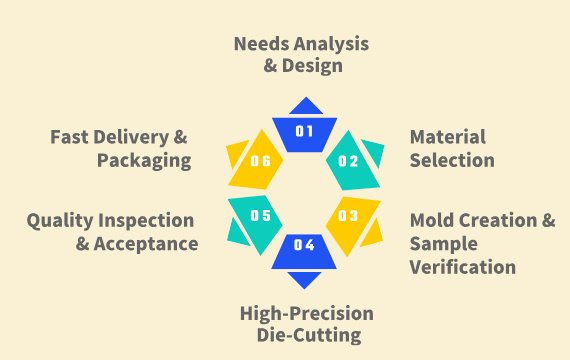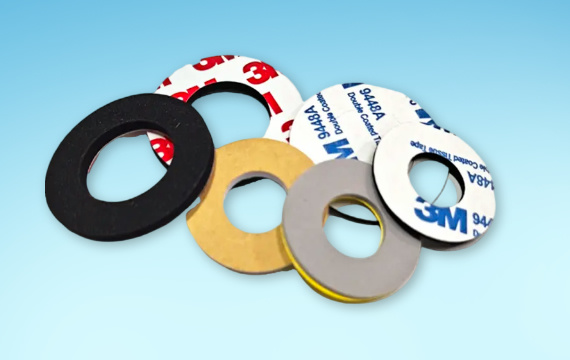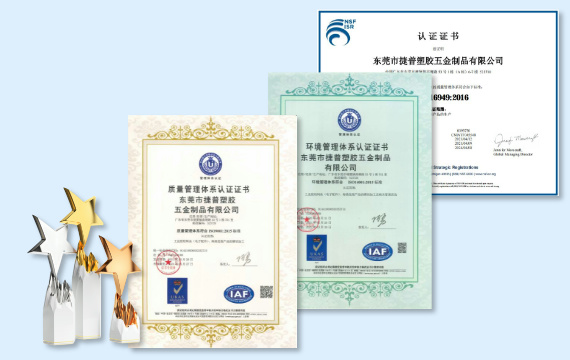Custom Your Die Cut Foam Gaskets
- Custom Die Cut Foam Gaskets – Precision-cut to fit your exact specifications.
- High-Quality Materials – Durable and flexible foam for various applications.
- Fast Sample Production – Get custom Die Cut Foam Gaskets in just 3 days.
- ISO9001 & ISO14001 Certified – Reliable manufacturing with strict quality standards.
- Product Details
- Application Overview
- Material Insights
- Die-cut foam gaskets are used in many industries for sealing, cushioning, and insulation.
- They come in different materials like polyurethane, neoprene, silicone, and EPDM foam.
- Each type offers unique benefits, such as flexibility, heat resistance, or chemical protection.
- Die-cut foam gaskets can be precisely shaped to fit specific equipment and applications.
- They help fill gaps, absorb shocks, and protect components from environmental damage.
-
Automotive Industry
Die-cut foam gaskets seal car parts like headlights, mirrors, and dashboards, keeping out dust and water. Some foams handle high heat, making them ideal for engines. -
Electronics Industry
They protect screens, panels, and sensitive parts from dust, shocks, and electromagnetic interference. Lightweight and easy to cut, they fit perfectly into compact designs. -
HVAC Industry
Foam gaskets help seal air systems, reducing leaks and improving insulation. Some foams resist weather and UV rays, making them great for outdoor units. -
Aerospace Industry
They prevent leaks in engines and hydraulic systems while also reducing vibration. Durable foams withstand extreme temperatures and pressure changes. -
Medical Equipment
Used to seal devices and protect sensors from dust and liquids. Some foams are biocompatible and can handle high-temperature sterilisation. -
Home Appliances
They keep fridges and air conditioners sealed to improve insulation. Water-resistant foams prevent leaks in washing machines and dishwashers. -
Construction Industry
Foam gaskets seal windows and doors, blocking air and moisture. Some materials resist UV rays and last for years in outdoor conditions.

High-Precision Die-Cutting Foam Gaskets
At JIEPU, we specialise in custom Die-Cutting Foam Gaskets to meet your exact needs. Whether for automotive electronics, security, or other industries, we offer precise cutting, a variety of high-performance materials, and tailored designs to ensure a perfect fit.
With advanced technology and optimised production, we guarantee high quality, fast turnaround, and cost-effective solutions. No matter the order size, we help you improve product performance and speed up delivery. Get in touch today to explore our custom gasket solutions!
Die-Cutting Foam Gaskets: Precision and Process
Die-cutting foam gaskets involves cutting foam materials into precise shapes using specialised techniques. The process starts with selecting the right foam, like polyurethane or polyethylene, and designing custom moulds for cutting.
Key methods include flatbed die-cutting for bulk production, rotary die-cutting for high precision, and laser cutting for complex shapes. Each method ensures clean edges and accurate results, tailored to specific needs like sealing or insulation.

Jiepu’s Precision Environment for Foam Gasket Cutting
At Jiepu, we ensure foam gaskets are cut in a clean, controlled environment to meet the highest quality standards. Our 1000-class cleanrooms minimise dust and contamination, while temperature and humidity are kept stable at 23°C±2°C and 50%±5% humidity to prevent material warping.
We use anti-static tools and maintain strict cleanliness protocols for equipment and workspaces. Materials are pre-conditioned for 24 hours, and staff wear protective gear to avoid contamination. This attention to detail ensures every foam gasket meets precise size, strength, and performance requirements.
Jiepu’s Certified Excellence in Foam Gasket Die-Cutting
Jiepu delivers top-quality foam gasket die-cutting services, backed by ISO 9001, ISO 14001, and IATF 16949 certifications. These ensure precision, eco-friendly practices, and compliance with automotive industry standards.
Our high-accuracy cutting and strict quality control guarantee reliable foam gaskets for sealing and insulation. With custom solutions and sustainable production, Jiepu meets the needs of automotive, electronics, and medical industries.

Nrnare ut volutpat a, maximus
Simple & Fast: Foam Gaskets Sample & Quotation Process
When Choosing Die-Cutting Foam Gaskets, Customers Usually Consider Performance, Cost, Environment, And Processing Properties. Here Are Some Common Foam Materials, Each With Unique Characteristics And Applications:
-
Polyethylene Foam
Lightweight, Soft, Great Shock Absorption.
Cost-Effective, Easy To Process, Best For Low Pressure Sealing.
Used In Electronics, Appliances, Packaging, And Light Industry. -
Polypropylene Foam
Excellent Chemical Resistance, Wide Temperature Range.
Ideal For Environments With Chemical Exposure.
Common In Chemical Equipment, Automotive, And Industrial Machinery. -
Polyurethane Foam
High Elasticity, Excellent Compression Recovery, Great Sealing.
Perfect For High-Pressure And Dynamic Environments.
Used In Automotive, Aerospace, Industrial Equipment, And Appliances. -
Closed-Cell Foam
Water-Resistant, Moisture-Proof, Doesn’t Absorb Water.
Best For Damp Environments Or Water-Sealing Applications.
Used In Outdoor Equipment, Boats, Food Processing, And Electronics. -
Open-Cell Foam
Breathable, Suitable For Ventilating Or Filtering Applications.
Cost-Effective, Easy To Process.
Common In Filters, Ventilation Equipment, And Medical Devices. -
Nitrile Rubber Foam
Oil-Resistant, Fuel-Resistant, Great Chemical Resistance.
Ideal For Environments With Oil Or Chemical Contact.
Used In Car Engines, Industrial Machinery, And Chemical Equipment. -
Silicone Foam
Excellent High-Low Temperature Resistance, Can Be Used In Extreme Temperatures.
Good Electrical Insulation, Best For High Or Low-Temperature Environments.
Used In Aerospace, Electronics, Medical Devices, And Food Processing. -
EPDM Foam
Great Weather Resistance, Ozone & UV Resistant, Excellent Waterproofing.
Perfect For Outdoor Use.
Used In Automotive, Construction, Outdoor Equipment, And Appliances. -
PVC Foam
Great Chemical Resistance, Good Flame Retardancy.
Best For Fire-Resistant Or Chemical Exposure Applications.
Common In Industrial Equipment, Ships, And Chemical Equipment. -
Polystyrene Foam
Lightweight, Good Insulation, Cost-Effective.
Best For Low-Pressure, Low-Temperature Applications.
Used In Appliances, Packaging, And Light Industry. -
Polyester Foam
High Elasticity, Good Tear Resistance.
Great For Applications Needing High Elasticity And Durability.
Used In Automotive, Industrial Equipment, And Electronics. -
Aerogel Foam
Super Lightweight, High Thermal Insulation.
Perfect For Applications Requiring Heat Insulation.
Used In Aerospace And High-End Industrial Equipment. -
High-Performance Composite Foam
Combines Rubber’s Elasticity And Foam’s Lightness.
Ideal For High-Demand Sealing Applications.
Used In Automotive, Aerospace, And High-End Industrial Equipment. -
Conductive Foam
Good Conductivity, Used For Electromagnetic Shielding.
Ideal For EMC (Electromagnetic Compatibility) Applications In Electronics.
Used In Electronics And Communication Equipment. -
Fire-Resistant Foam
Great Fire Resistance And Flame Retardancy.
Ideal For Applications That Require Fire Protection.
Common In Industrial Equipment, Ships, And Buildings.
Choosing Tip:
When Selecting Foam Materials, Consider Temperature Range, Pressure, Chemical Exposure, And Whether You Need Waterproofing Or Fire Resistance. It’s Also Important To Factor In Cost And Ease Of Processing To Ensure You Get The Best Value While Meeting Performance Requirements. At Jiepu, We Offer Die-Cutting Services To Meet Your Custom Needs.
When choosing the right foam material, it’s important to consider the specific needs of your application. Here’s a simple guide to help you understand the difference between open-cell foam and closed-cell foam:
Open-Cell Foam
- The foam has interconnected pores, allowing air and moisture to pass through.
- It’s soft, compressible, and bouncy.
- Great for sound absorption and noise reduction.
- Best used for applications needing airflow or ventilation.
- Common in electronics, medical devices, and buildings for noise control.
Closed-Cell Foam
- This foam has sealed, independent pores, keeping air and moisture out.
- It offers excellent water resistance and insulation.
- Strong, durable, and more supportive.
- Ideal for outdoor or damp environments.
- Common in automotive, aerospace, and insulation for buildings.
When choosing, consider your sealing needs. If you need waterproofing or moisture protection, go for closed-cell foam. If you need ventilation or sound absorption, open-cell foam is the better choice.
Think about the environment too. Closed-cell foam is best for harsh or outdoor conditions, while open-cell foam works well indoors for cushioning or damping.
If you’re still unsure, Jiepu offers die-cutting services to help you select and process the perfect foam material for your needs.
| Material Type | Temperature Range | Notes |
|---|---|---|
| Polyethylene Foam (PE Foam) | -100°C to 90°C | Excellent low-temperature performance, suitable for low-temperature pipelines and HVAC ducts. |
| Polypropylene Foam (PP Foam) | -20°C to 80°C | General temperature range, suitable for ambient and mild high-temperature environments. |
| Polyurethane Foam (PU Foam) | -35°C to 80°C | Standard operating range; some modified materials can reach up to 120°C. |
| Closed-Cell Polystyrene Foam (EPS) | -50°C to 75°C | Suitable for a wide temperature range with good thermal insulation properties. |
| Open-Cell Polyurethane Foam | -20°C to 80°C | Elastic modulus decreases at low temperatures, and performance degrades faster at high temperatures. |
| EPDM Foam (Ethylene Propylene Diene Monomer) | -50°C to 150°C | Good weather resistance, suitable for outdoor and extreme temperature environments. |
| Silicone Foam | -67°C to 200°C | Excellent performance in both low and high temperatures, suitable for extreme temperature applications. |
| EPP Foam (Expanded Polypropylene) | -40°C to 130°C | Maintains flexibility at low temperatures and stable performance at high temperatures. |
The temperature performance of different materials may vary depending on the specific formulation and manufacturing process. When selecting, it is recommended to consider the actual temperature requirements of the application and combine them with other material properties (such as chemical resistance and mechanical properties) for a comprehensive evaluation.
At Jiepu, we provide double-sided adhesive and adhesive backing options for die-cut foam gaskets.
Single-sided adhesive is perfect for attaching to just one surface.
Double-sided adhesive is great when you need to stick the gasket to two surfaces.
We offer adhesive options for materials like polyurethane, silicone, neoprene, EVA, and EPDM.
These materials can handle various conditions such as temperature and chemical exposure.
We can customise gaskets to your preferred shape and size.
You can choose between permanent or removable adhesive depending on your needs.
These adhesive-backed gaskets are used in industries like automotive, electronics, and manufacturing for sealing, insulation, and vibration damping.
If you need guidance on selecting the best adhesive option, we’re here to help.
















